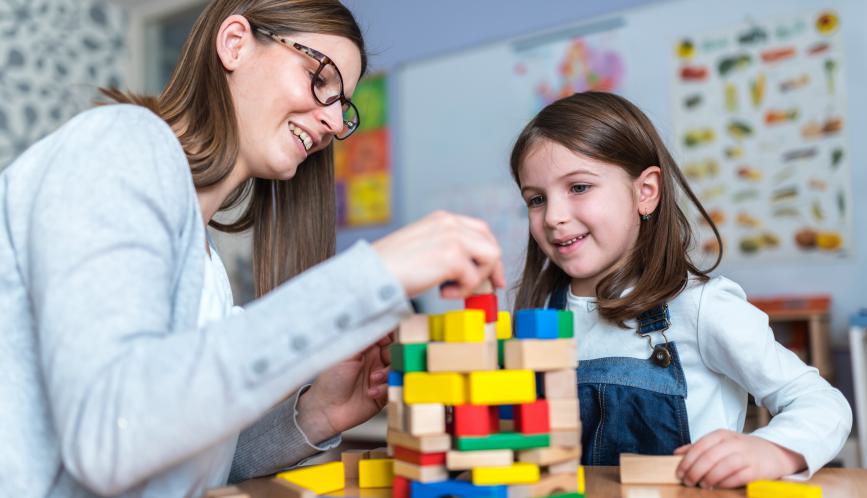Previous literature on early childhood development has shown that parental investments significantly impact later-life outcomes. As HCEO Co-Director James Heckman and ECI/FI network leader Flavio Cunha have written, the family plays a “powerful role” in shaping abilities through genetics, parental investments, and through choice of child environments. But while it is now widely understood that these investments matter, less is known about how parents make these investment decisions.
In a new HCEO working paper, ECI/Markets network member Orazio Attanasio, ECI network member Teodora Boneva, and their co-author Christopher Rauh help fill this gap in the research. In their study, Parental Beliefs about Returns to Different Types of Investments in School Children, which was funded by the Nuffield Foundation, the authors investigate parental beliefs about the returns to different types of investments in school children.
“It struck us as an important question,” Boneva says. “How do parents decide where to send their children to school, or how much time and financial resources to allocate to their children? If we want to understand what determines skills, or why, for example, we see such a big socioeconomic gap in skills, we need a better understanding of what determines these investments.”
Related literature suggests that parental resources play an important role in their choices, but the data in this paper do not support such a simple conclusion. “We wondered what else there could be that could explain the variation in these decisions,” Boneva says. One potential hypothesis is that parental investments are driven by their beliefs about the returns to these investments. “We decided to elicit parental beliefs about the returns to different types of investments and examine to what extent these beliefs are related to actual investment decisions,” Boneva says.
To do this, the authors administered a survey to a representative sample of 1,962 parents in England. They elicited parental beliefs about returns to investments by presenting parents with hypothetical investment scenarios that differed along three dimensions: the level of parental time investments, the level of parental material investments, and the quality of school the child attends. “For each scenario, parents are asked to state what they believe the future earnings of the child will be at age 30,” the authors write. “This research design allows us to investigate how parents perceive the returns to these three different inputs and it allows us to examine whether parents perceive the different inputs as substitutes or complements.” The hypothetical scenarios allow the researchers to “vary one input at a time while keeping other factors constant,” allowing them to elicit individual perceived returns to different educational inputs as well as the perceived complementarity/substitutability between the different inputs.
“If you would like to study beliefs, you first have to think about how to actually measure those beliefs, how to obtain data on them,” Boneva says. “One of the key contributions of our paper is to collect that data. We are, I think, the first to collect data on parental beliefs in a representative sample.”
The authors find that perceived returns to the different types of investments correlate strongly. “Those parents who perceive the returns to school quality to be high are also more likely to perceive high returns to parental time and material investments,” the paper notes. In addition, the authors find that there is a “perceived complementarity between home and school inputs, i.e. parents perceive the returns to material resources at home to be higher if the children also attend better schools.” Interestingly, Boneva and her co-authors did not find significant systematic differences in perceived returns by socioeconomic background or income of the responding parent or by the gender or ability of the child presented in the scenario.
The paper also notes that perceived returns correlate with actual investment decisions reported by the participating parents. “Parents who perceive the returns to time investments to be higher spend more time interacting with their children, parents who perceive the returns to material investments to be higher spend more money on learning resources, and parents who perceive the returns to school quality to be higher spend significantly more money on school fees,” the authors write. For instance, an increase in the perceived return to time investments by 10 percentage points is associated with parents spending 46 more minutes every week with their child.
While this paper is a descriptive study and would require an intervention component to provide strong policy implications, it makes an important contribution to our understanding of parental investments. “To understand why some parents invest more into their children and to gain a better understanding of how parents might respond to policy changes, it is important to understand how parents perceive returns to investments,” the authors write. This paper finds that perceived returns to all three investments are positive and, crucially, it establishes that “parents who perceive the returns to investments to be higher also invest considerably more into their children.” As we know that parental investments play a critical role in child development and later-life outcomes, understanding how parental beliefs shape these investments is key.
“The results of our study are important because they can help us identify bottlenecks which prevent parents from investing into their children,” the authors write. “They can also help us shed more light on the question of how policy changes may bring about changes in parental behavior.”
“There are some parents who believe that no matter what they do, their children just develop at their own pace. Then there are other parents who believe it’s really important that their child is exposed to an enriching home environment and attends a high-quality school,” Boneva says. “Parental investments play an important role in children’s lives. We show that some parents are not aware of this link. I find that quite striking and fascinating. Our research helps us understand what interventions may be effective in raising parental investments.”



